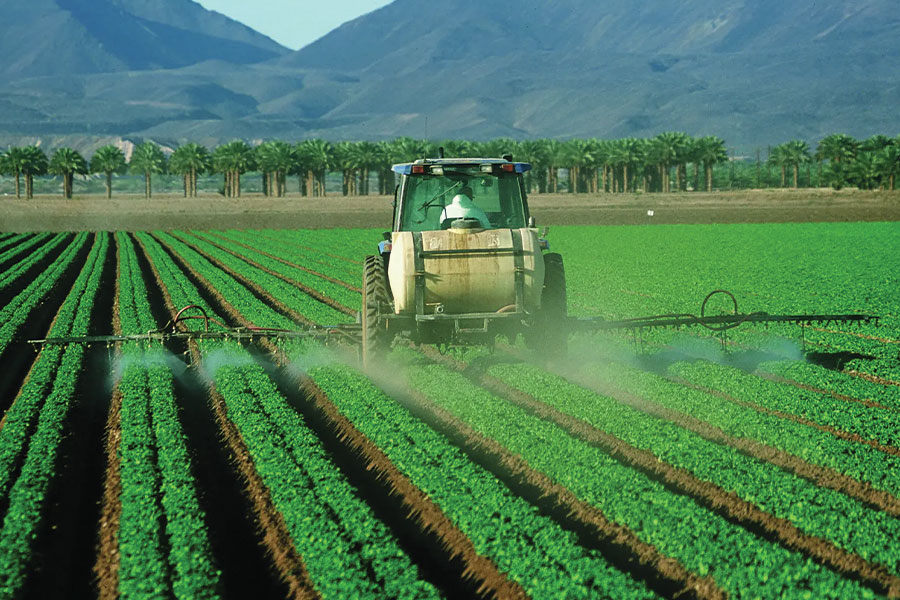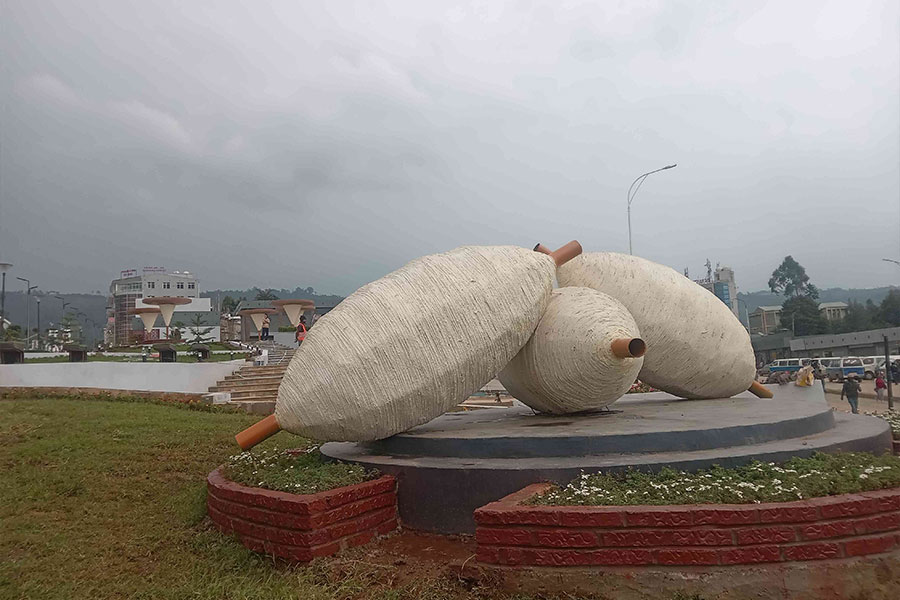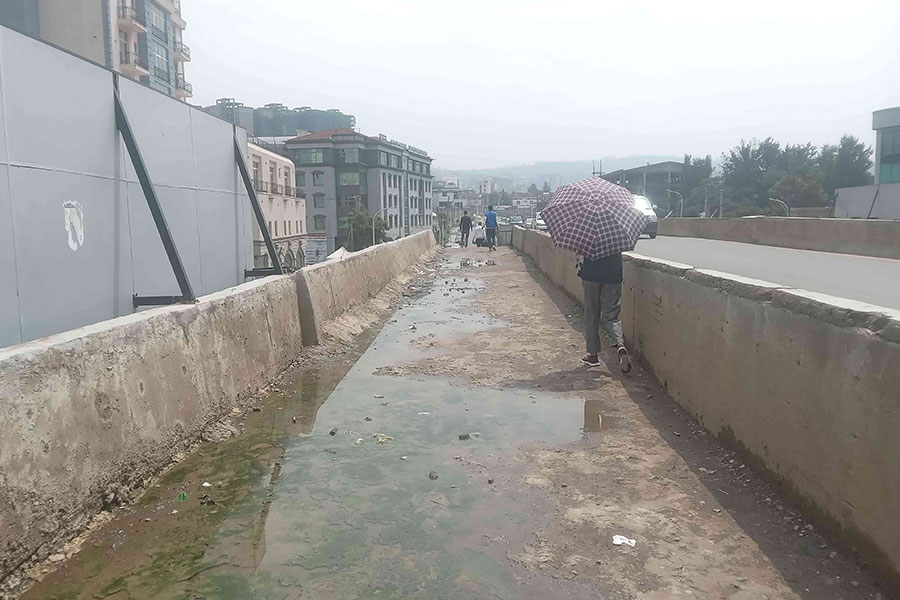Ethiopia’s economy and food security rest squarely on agriculture. Farming accounts for roughly a third of the country’s GDP and employs nearly 85% of the population—most of them smallholder farmers cultivating less than a hectare of land. Yet these farmers remain extremely vulnerable to climate shocks. Climate change has made droughts, irregular rains, pests, and crop diseases a constant threat to their livelihoods. When the keremt rains fail, as recent multi-year droughts have painfully shown, crop yields collapse and families go hungry. Traditional coping mechanisms—selling livestock, depleting savings, or relying on food aid—will no longer be sustainable for a country of Ethiopia’s size. These short-term responses erode farmers’ assets and trap them in cycles of poverty. Modern agricultural insurance offers a better way forward.
Properly designed and delivered, agricultural insurance cushions farmers from climate shocks by providing timely payouts after a climate-stressed season. This prevents them from selling off assets or cutting back on essentials like food, shelter, or school fees. Just as importantly, insurance builds confidence. Farmers are more willing to invest in improved seeds, fertilizers, and better farming practices because they know a failed season will not devastate their livelihoods. International experience backs this up. The World Food Programme’s R4 Rural Resilience Initiative has shown that insured farmers consistently invest more in productivity-enhancing inputs—even in risky seasons—because insurance turns risk into opportunity. It also makes lenders more willing to extend credit, unlocking new investments that boost yields and strengthen food security. In addition, evidence from index-insurance programs worldwide shows that farmers reinvest payouts in better seeds and fertilizers when their downside risk is covered. By protecting households from financial shocks, insurance breaks poverty traps: insured families are more likely to keep children in school and maintain proper nutrition even during drought years.
In short, agricultural insurance is not just a safety net—it is a catalyst for growth and resilience. If Ethiopia is serious about feeding its people and building a climate-resilient future, scaling agricultural insurance must become a national priority.
These solutions are particularly critical for Ethiopia, where agriculture is the main source of livelihood for more than 82 million people, most of them smallholder farmers. Yet fewer than 1% have any form of crop insurance. Scaling agricultural insurance could dramatically cut rural poverty and hunger while serving as a vital tool for climate change adaptation. With nearly 95% of Ethiopia’s agricultural output coming from smallholder farms, extending this protection to millions of farmers is more than just a smart policy choice—it is an urgent necessity.
Farmers’ demand for insurance is highly sensitive—small changes in price, trust, or how it is delivered can determine whether they buy in. In Ethiopia, uptake has long been held back by four major hurdles: high premium rates, limited farmer awareness, suboptimal product design, and underuse of technology to improve efficiency.
Affordability has long been the biggest barrier. For nearly 15 years, agricultural insurance premiums averaged around 17%, far beyond what most smallholders could afford. A breakthrough came when Pula Advisors—a Swiss-based ag-tech firm backed by the IFC and the Gates Foundation, with solutions reaching 20+ countries and 20 million farmers—partnered with the Agricultural Transformation Institute (ATI) under the Ministry of Agriculture, supported by regional bureaus and Oromia Insurance S.C. By embedding insurance into familiar services such as input supply, credit, and crop procurement, distribution challenges were resolved, uptake increased, and costs dropped significantly. Pula’s success in Ethiopia came from integrating insurance into the Input Voucher System (IVS), which now reaches over 10 million farmers across 300 woredas. By spreading risk across a large base and lowering distribution costs, premiums fell to just 6.5%, making insurance accessible to smallholders for the first time.
The proof of concept—funded by KfW through the World Food Programme (WFP)—was first piloted in the Amhara region, reaching 122,000 farmers in its initial year. Likewise, microfinance-based models, like WFP and Oxfam’s R4 Initiative, bundle insurance with loans or savings, so farmers receive coverage without needing to opt in separately is another model.
Tackling high premium rates through bundling also addresses another critical barrier to adoption: farmers’ awareness and trust in insurance. Research across Africa shows that farmers are unlikely to purchase insurance as a stand-alone product, and uptake is especially low in areas with limited education. Reaching farmers through trusted channels is therefore essential.
By bundling insurance with existing systems—such as the Input Voucher System (IVS)—programs can build credibility, improve understanding of how index insurance works, and gradually shift farmer perceptions from skepticism to trust. Initial pilots struggled with low awareness. Many farmers saw premiums as expenses, not investments. National efforts must include farmer training and peer testimonials so that insurance is seen as a tool of security and prosperity.
Third, product design matters just as much as affordability. Insurance products are not static; they must evolve to reflect farmers’ realities and address their specific risks. In Ethiopia, earlier pilots relied heavily on satellite-based technologies, which primarily captured drought-related losses but failed to account for other types of crop damage. This left many farmers dissatisfied and eroded trust. The introduction of Area Yield Index Insurance (AYII) products—and, in some cases, hybrid models combining AYII with satellite-based indices—has started to close this gap. By aligning product design with farmers’ real experiences and actual losses, these innovations are rebuilding trust and driving higher uptake. In Ethiopia, AYII now covers more than 18 risks, including drought, pests, diseases, and excessive rainfall, making it far more comprehensive than earlier products.
Finally, modern agricultural and insurance technologies are crucial for improving underwriting, execution efficiency, cost reduction, and transparency. In Ethiopia, Pula leverages two advanced digital systems—PIE and Mavuno—to deliver smarter, faster, and more reliable insurance services. At the start of each season, Pula, working with insurers, divides Ethiopia into agro-ecological zones and uses historical yield data through PIE (Pula Insurance Engine) to design products, price premiums, and determine payout triggers. PIE, widely adopted by 68 national insurers and 22 global reinsurers, processed over 800 quotes in 2022 with an average turnaround time of just 25 hours. Once the season begins, farmer registration and yield assessments are managed through Mavuno, an AI-enabled data collection platform with over 150 built-in quality checks. It collects more than 10 million farmer data points annually. At harvest, trained enumerators use smartphone apps and portable scales to sample crops. If yields in a zone fall below a set threshold, payouts are automatically triggered for all insured farmers—eliminating paperwork and lengthy field inspections. Behind the scenes, Pula’s “digital actuary” uses decades of weather and crop data to calculate fair premiums and customize products, ensuring farmers receive accurate and timely compensation.
Ethiopia must accelerate its digital transformation in agriculture. Public-private partnerships involving local insurers, technical service providers, the Ministry of Agriculture, regional bureaus, and research institutions can drive this scale-up. The rapid expansion of mobile banking platforms should also be leveraged to ensure payouts reach even the most remote farmers instantly. Supporting digital innovation—from farmer onboarding and registration to yield data collection and e-signatures—will reduce costs, increase transparency, and remove the friction that has limited insurance uptake in the past.
Since launching in Ethiopia in 2022, Pula Advisors has demonstrated what is possible. Today, its fully market-led, subsidy-free insurance model has expanded across Tigray, Amhara, and Oromia, covering over one million farmers with premiums dropping well below 6.5%. To date, the program has paid out over 210 million birr to smallholder farmers and aims to reach 10 million farmers in the coming years.
To institutionalize this progress, Pula and five leading Ethiopian insurers—Abay Insurance,
Africa Insurance, Ethiopian Insurance Corporation, Nyala Insurance, and Oromia
Insurance—have formed the Agricultural Insurance Consortium of Ethiopia (AICE). With Pula as its technical partner, AICE serves as a unified voice for agricultural insurance, engaging government institutions, donors, and development partners to shape the future of this critical sector.
Other promising models are emerging as well. Organizations such as WFP, COOP Bank of Oromia, IFC, and the World Bank are embedding insurance with savings, loans, and training programs, as well as introducing livestock and social protection insurance for farmers who cannot afford traditional premiums.
This success proves that with the right partnerships, technology, and delivery models, agricultural insurance can be affordable and accessible—paving the way for greater climate resilience, improved food security, and a stronger rural economy.
The lesson is clear: agricultural insurance works when it is affordable, trusted, and tailored to farmers’ realities.
Agricultural insurance is finally gaining traction within government, particularly with the Ministry of Agriculture’s newly established Rural Financial Services Unit (RFSU). This unit has a critical role to play in driving policy advocacy, regulatory reforms, and market incentives to deliver sustainable, market-led solutions. The government has a unique opportunity to scale Ethiopia’s most successful insurance program—already reaching over one million farmers through the Agricultural Insurance Consortium of Ethiopia (AICE) and Pula Advisors, the largest initiative of its kind in the country—without reinventing the wheel.
Regulatory reforms, including the forthcoming Insurance Proclamation and Microinsurance Directive, must be prioritized. These laws would empower banks, cooperatives, and unions to distribute insurance directly, expanding reach and building trust. Coordination will also be key. RFSU should align ministries, regional bureaus, insurers (represented by AICE), and development partners around a single, national crop insurance roadmap.
Equally important are data and farmer awareness. A centralized database—leveraging existing service provider data, including from Pula—should be established with support from partners already active on the ground. Awareness campaigns, integrated into extension services, must be publicly funded so farmers view insurance as an investment in security and prosperity, not just another cost.
If these steps are taken, Ethiopia could build Africa’s largest agricultural insurance program, creating a coordinated ecosystem where insurance is as routine as fertilizer, credit, or extension services. We can finally end the “green drought,” where crops grow but incomes fail. The payoff would be transformative: farmers confident to take productive risks, higher yields, stronger food security, and a more climate-resilient rural economy.
Ethiopia’s agricultural productivity and climate resilience depend on reducing uncertainty. Insurance is not charity—it is the foundation for long-term growth. If policymakers act now, agriculture can shift from being a climate gamble to a reliable engine of prosperity. Insuring our farmers is the surest way to secure Ethiopia’s harvests—and its future.
Dagmawi Haileyesus Assefa is the Country Director for Pula Advisors in Ethiopia, where he leads efforts to scale climate-smart insurance and data solutions for smallholder farmers.









 Loading your updates...
Loading your updates...